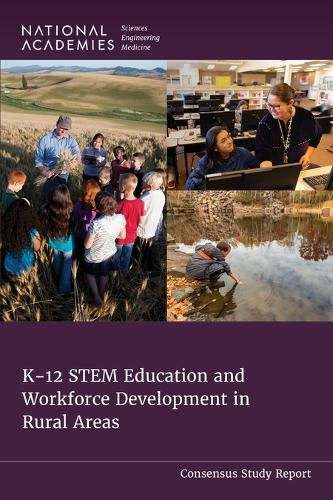Readings Newsletter
Become a Readings Member to make your shopping experience even easier.
Sign in or sign up for free!
You’re not far away from qualifying for FREE standard shipping within Australia
You’ve qualified for FREE standard shipping within Australia
The cart is loading…






Rural areas can provide a rich context for learning science, technology, engineering and mathematics (STEM), but these communities and the students in them are often overlooked in ongoing efforts to expand access to high-quality K-12 STEM education and workforce development. Addressing barriers, often related to funding, and promoting unrecognized assets for STEM learning can enhance the ability of individuals in rural areas to further engage in and contribute to their communities or to broader scientific exploration and discovery.
K-12 STEM Education and Workforce Development in Rural Areas makes recommendations to federal, state, and local educational agencies, programs, and other relevant stakeholders to advance STEM education and workforce development for rural America. This report comes in response to a mandate within the CHIPS and Science Act of 2022.
Table of Contents
Front Matter Summary 1 Introduction 2 Defining and Characterizing Rural America 3 Education Policy, Funding, and Programs in Rural Areas 4 National Trends in Rural STEM Education and Workforce Development 5 Effective STEM Learning Experiences and Pathways 6 Educator Recruitment, Retention, and Professional Learning 7 STEM Education and Workforce Development Infrastructure and Materials 8 Conclusions, Recommendations, and Research Agenda Appendix A: Biosketches Appendix B: Analysis of Current Federal Funding for Rural STEM Programs and Research
$9.00 standard shipping within Australia
FREE standard shipping within Australia for orders over $100.00
Express & International shipping calculated at checkout
Rural areas can provide a rich context for learning science, technology, engineering and mathematics (STEM), but these communities and the students in them are often overlooked in ongoing efforts to expand access to high-quality K-12 STEM education and workforce development. Addressing barriers, often related to funding, and promoting unrecognized assets for STEM learning can enhance the ability of individuals in rural areas to further engage in and contribute to their communities or to broader scientific exploration and discovery.
K-12 STEM Education and Workforce Development in Rural Areas makes recommendations to federal, state, and local educational agencies, programs, and other relevant stakeholders to advance STEM education and workforce development for rural America. This report comes in response to a mandate within the CHIPS and Science Act of 2022.
Table of Contents
Front Matter Summary 1 Introduction 2 Defining and Characterizing Rural America 3 Education Policy, Funding, and Programs in Rural Areas 4 National Trends in Rural STEM Education and Workforce Development 5 Effective STEM Learning Experiences and Pathways 6 Educator Recruitment, Retention, and Professional Learning 7 STEM Education and Workforce Development Infrastructure and Materials 8 Conclusions, Recommendations, and Research Agenda Appendix A: Biosketches Appendix B: Analysis of Current Federal Funding for Rural STEM Programs and Research